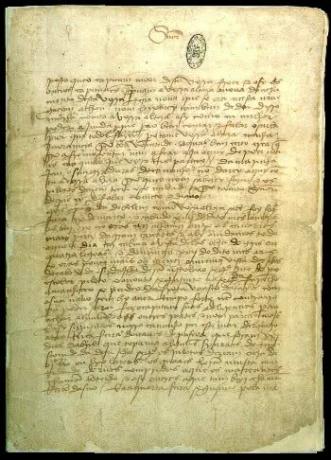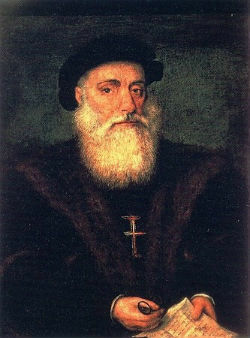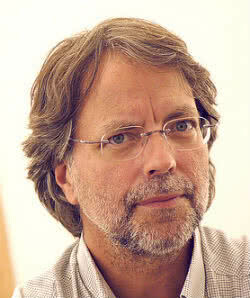THE "Letter from Pero Vaz de Caminha” or “Letter to King Dom Manoel on the discovery of Brazil” was a document written by the Portuguese scribe Pero Vaz de Caminha.
Written on May 1, 1500, in Porto Seguro, Bahia, it was taken to Lisbon under the care of Gaspar de Lemos, considered one of the greatest navigators of his time.
Despite having been written in the 16th century, the Letter was discovered many years later, in the 18th century by José de Seabra da Silva (1732-1813). He was a statesman, minister and chief guard at Torre do Tombo.
Its official and academic appearance is the work of the Spanish philosopher and historian Juan Bautista Munoz (1745-1799).
In Brazil, his first publication was in 1817, in the work “Brazilian Chorography”.
Probably the first version published in Brazil was by Father Manuel Aires de Casal (1754-1821). He was a Portuguese geographer, historian and priest who lived most of his life in Brazilian territory.
It is important to note that the walk charter it is considered the first document written in Brazil and, for this reason, it is the country's literary landmark. It is part of the first literary manifestation belonging to the 16th century movement.
Charter Summary

Composition of the Charter
Started as a customary epistolary process, the Letter, after developing the first paragraphs, performing all the reverence to the monarch D. Manuel I (1469-1521), will continue as an ordinary diary.
About its composition, it was written in seven sheets, each one divided into four pages. From the phonetic connotation of orthographic marks, it is worth mentioning that Caminha reproduces the typical period style of Portuguese texts up to the 15th century.
Its periodization makes the manuscript an organized and very chronologically ordered product.
The writer punctuates his text in such a way as to provoke an expressive effect capable of capturing the reader's attention. In addition to ensuring that the reading of the manuscript is quite simple.
Content of the Letter
About its content, it was a letter written to the king, in order to communicate to him the discovery of the new lands.
The fascination of Europeans in relation to the discovery of the "New World" is very evident in the records made by Caminha. In the Letter he describes his impressions of the territory that would come to be called Brazil.
It documents the at-a-glance physical composition of the territory. In addition, it narrates the episode of the Portuguese disembarking on the beach, the first meeting between the Indians and the colonizers, and the first mass held in Brazil.
Curiosity
The term “discovery” is currently very much opposed by Brazilian scholars. This is because it leaves out the indigenous peoples who inhabited the territory at the time of the arrival of the “discoverers”.
Excerpts from the Letter
"There you would see gallants, painted black and red, and quartered, as well by the bodies as by the legs, which, of course, looked good that way. Also walking among them were four or five women, young, who thus naked did not look bad. Between them walked one, with a thigh, from the knee to the hip and the buttock, all dyed with that black dye; and everything else in its natural color. Another had both knees with the curves thus painted, and also the laps of the feet; and his shames so bare, and so innocence thus uncovered, that there was no shame in it."
"Everyone walks shaved over their ears; even so for eyebrows and eyelashes. All the foreheads, from source to source, have black dye inks, which looks like a black ribbon two fingers' width apart."
"They were shown a brown parrot that the Captain carries with him; they immediately took it in their hand and waved to the land, as if it were there.
They showed them a ram; they ignored him.
They showed them a chicken; they were almost afraid of her, and didn't want to touch her. Then they caught him, but as if they were amazed.
They were given to eat there: bread and boiled fish, confectionery, fartéis, honey, stale figs. They didn't want to eat almost anything of it; and if they proved something, they threw it away.
Wine was brought to them in a cup; as soon as they put his mouth to it; they didn't like him at all, nor did they want any more.
They brought water to them in a barrage, each tasted his mouthwash, but did not drink; they just rinsed their mouths and threw it out.
One of them saw white rosary beads; he motioned for them to be given to him, and played with them very much, and threw them about his neck; and then he took them off and put them around his arm, and waved to the earth and again to the Captain's beads and necklace, as they would give gold for that."
Check out the work in full by downloading the PDF here: Pero Vaz de Caminha's Letter.
Who was Pero Vaz de Caminha?

Pero Vaz de Caminha he was born in the city of Porto (Portugal) in 1450 and died in the city of Calicut (India) on December 15, 1500.
His father was the Duke of Bragança and, therefore, he had a solid education. He worked as treasurer and clerk at the Mint. In addition, he held the position of councilor for the city of Porto, in Portugal.
In 1500 Caminha accompanied the fleet of Pedro Alvares Cabral to Brazil being responsible for writing about the impressions of the sighted land. Without a doubt, this was Caminha's greatest achievement and what immortalized him.
Fell in Enem!
(Enem 2013) From end to end, it's all beach-palma, very plain and very beautiful. From the backlands it seemed to us, seen from the sea, to be very large, because, looking out, we could only see land with trees, which seemed very long to us. In it, until now, we have not been able to know that there is gold, nor silver, nor anything of metal or iron; we didn't even see it. But the land itself has very good air [...]. But the best fruit that can be taken from it seems to me to be saving these people.
Letter from Pero Vaz de Caminha. In: MARQUES, A.; BERUTTI, F.; FARIA, R. Modern history through texts. São Paulo: Context, 2001.
Pero Vaz de Caminha's letter allows us to understand the colonizing project for the new land. In this excerpt, the report emphasizes the following objective:
a) To value the catechesis to be carried out on native peoples.
b) Describe the local culture to enhance Portuguese prosperity.
c) Transmit indigenous knowledge about the existing economic potential.
d) Highlight the poverty of the native inhabitants to demarcate European superiority.
e) Criticizing the way of life of indigenous peoples to highlight the absence of work.
Alternative a) To value the catechesis to be carried out on native peoples.
Read too:
- 16th century
- Characteristics of the 16th century
- Information Literature
- Discovery of Brazil
- Arrival of the Portuguese in Brazil
- Exercises on 16th Century

